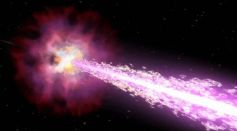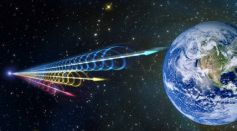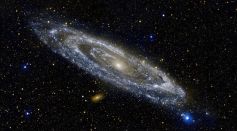Tags: Milky Way

Milky Way: Stream of Nearly 500 Stars in the Galaxy is a Family Thousands of Light-Years Away
Sagittarius A* Might Not Be a Black Hole After All, Hints Toward Dark Matter Mass
Dark Matter Origin Still a Mystery: Is It More Than a Cosmic Anomaly?

Milky Way’s Outermost Regions Unveiled by New All-Sky Map

Mysterious Glow From Center of Milky Way Galaxy: Is It Dark Matter?

Experts Found Vast 'Halo' of Dark Matter Around Dwarf Galaxy

A New Study on Theia 456 Reveals Hundreds of Stars Born Almost at the Same Time

'Super-Earth' Orbiting One of Milky Way's Oldest Stars, Observed
Astronomers Rewrite the History of the Milky Way Galaxy
Kepler Space Telescope Reveals About 300 Million Habitable Planets Possibly Exist in the Milky Way

Scientists Found Mysterious 'Fast Radio Burst' In the Milky Way for the First Time
Experts Found Earth-Sized Rogue Planet Floating in Milky Way

Mystery of Magellanic Stream in the Milky Way, Finally Revealed

ALMA Finds a Galaxy Like Our Own in the Early Universe

Study: Phoenix Stream Could Help Explain Milky Way Formation
Dwarf Star Blasted Itself and Is Now Hurtling Across the Milky Way

The South Pole Wall: 100 Million Billion Stars Are Found Hiding in the Milky Way

Evidence of Stars Born Elsewhere Suddenly Merged With the Milky Way
The Tilted Disk: The Milky Way’s Core Energy Reveals New Insight for the Entire Galaxy
Unique Telescope Captures First-Ever X-ray Imaging of the Milky Way, Including Spectacular Nebula and Blackholes
Most Popular

Memory Science Uncovered: How the Brain Works to Form Memories and Why We Forget — Neuroscience Explained

The Science Behind Everyday Technology: Inventions That Changed How We Live

Top 10 Greatest Scientific Discoveries That Changed Human History Forever

Exoplanets Discovery and the Quest to Find Alien Life: Are We Alone in the Universe?





